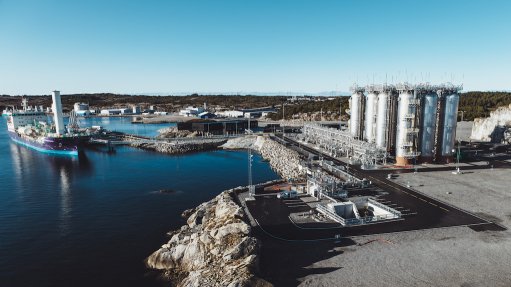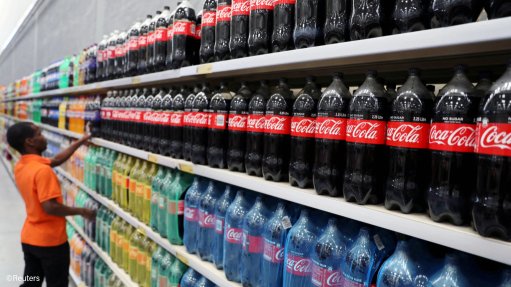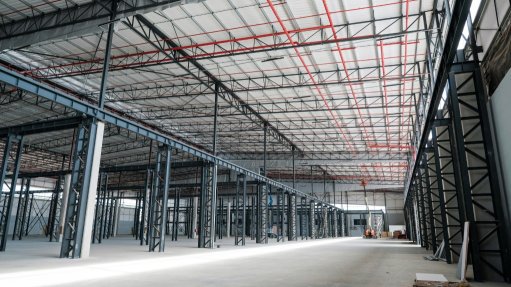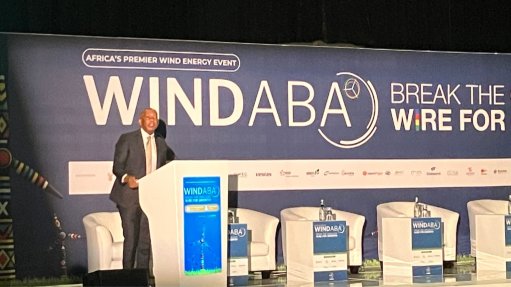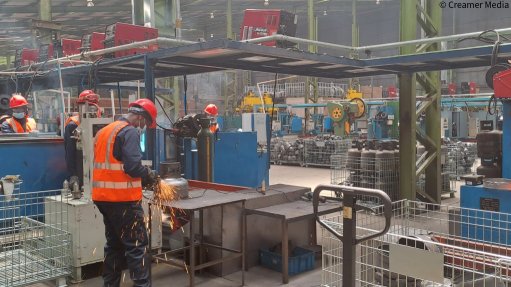Green hydrogen has role to play in wind, solar energy in Africa
Africa has considerable potential to generate solar and wind energy at a low cost, as it hosts many areas of high solar irradiation and good wind speeds.
There is also potential to transport that energy to other areas where there is high demand for green energy to produce hydrogen, Delft University of Technology Professor Dr Ad van Wijk has said.
He was speaking during the first day of a two-day green hydrogen conference hosted by industry association Africa Solar Industry Association (Afsia).
Van Wijk said there was a degree of mismatch between areas where there is high demand for renewable energy and the ability for those areas to generate the necessary solar and wind energy and, therefore, there is a need to store and transport this energy to high demand areas.
He said that converting this renewable energy to hydrogen, and using hydrogen as an energy carrier, presents the ideal solution for this, as it can cheaply carry renewable energy to global areas of demand.
He posited that hydrogen would become the global carbon-free energy carrier to store and transport cheap solar and wind electricity globally.
He explained that electrolysis technology was being used for hydrogen production from renewable resources.
Electrolysis is the process of using electricity to split water into hydrogen and oxygen, by using an electrolyser.
Van Wijk noted that mass production in this regard would significantly reduce the cost of electrolysis.
He highlighted an important factor as the cost of hydrogen production, with the main element of this being electricity costs.
Therefore, he emphasised that it was important to produce hydrogen at places where there was the lowest cost of renewable energy for solar and wind; therefore, at places with good resources for these, which therefore presents opportunities for Africa.
Through this, he noted, renewables would come close to reaching cost parity with fossil fuels.
In terms of options for transporting the hydrogen to areas of demand, Van Wijk mentioned shipping, whereby it is converted into liquid hydrogen and then shipped.
Moreover, there is the option to convert the hydrogen into ammonia, and then shipping it.
Lastly, there is the option to convert to liquid organisation hydrogen carrier, and reusing oil tankers to transport this.
Van Wijk said these processes were already developed and would therefore just need to be scaled up globally.
Outside of shipping, he also mentioned the option of reusing gas pipelines, with this especially attractive to several African countries that already have infrastructure extending into European markets of demand.
Van Wijk indicated that there was also the question of storage, with fluctuating output from solar and wind power.
He mentioned salt caverns as an option for storing hydrogen, with this already being done in the UK.
He noted that the cost of storing hydrogen in salt caverns is about 200 times cheaper than using batteries as storage, which presents a case for using hydrogen to export renewable energy.
Moreover, with hydrogen transport about ten times cheaper than batteries, its appeal is further enhanced.
Van Wijk acclaimed that hydrogen’s potential was being recognised globally as, last year, 30 countries developed strategies related to hydrogen production.
He noted that many of these strategies posit hydrogen as a new export product.
“Many places in Africa have good renewable resources, and therefore, the continent is on the brink of becoming a renewable energy exporter for the world,” enthused Van Wijk.
Meanwhile, addressing the issue of whether water should be used to generate hydrogen in water-stressed areas, Council for Scientific and Industrial Research mechanical engineer Thomas Roos acclaimed that there was potential to make use of desalinated water for the production of hydrogen.
Unlike industries such as agriculture, where it is too expensive, he noted that the costs in the hydrogen industry would be much lower.
Therefore, this would allow the industry to finance the construction of desalination plants.
Therefore, rather than putting a strain on water resources, the hydrogen industry could help countries that have intermittent water stress, such as South Africa, by funding desalination plants.
Article Enquiry
Email Article
Save Article
To advertise email advertising@creamermedia.co.za or click here
Comments
Press Office
Announcements
What's On
Subscribe to improve your user experience...
Option 1 (equivalent of R125 a month):
Receive a weekly copy of Creamer Media's Engineering News & Mining Weekly magazine
(print copy for those in South Africa and e-magazine for those outside of South Africa)
Receive daily email newsletters
Access to full search results
Access archive of magazine back copies
Access to Projects in Progress
Access to ONE Research Report of your choice in PDF format
Option 2 (equivalent of R375 a month):
All benefits from Option 1
PLUS
Access to Creamer Media's Research Channel Africa for ALL Research Reports, in PDF format, on various industrial and mining sectors
including Electricity; Water; Energy Transition; Hydrogen; Roads, Rail and Ports; Coal; Gold; Platinum; Battery Metals; etc.
Already a subscriber?
Forgotten your password?
Receive weekly copy of Creamer Media's Engineering News & Mining Weekly magazine (print copy for those in South Africa and e-magazine for those outside of South Africa)
➕
Recieve daily email newsletters
➕
Access to full search results
➕
Access archive of magazine back copies
➕
Access to Projects in Progress
➕
Access to ONE Research Report of your choice in PDF format
RESEARCH CHANNEL AFRICA
R4500 (equivalent of R375 a month)
SUBSCRIBEAll benefits from Option 1
➕
Access to Creamer Media's Research Channel Africa for ALL Research Reports on various industrial and mining sectors, in PDF format, including on:
Electricity
➕
Water
➕
Energy Transition
➕
Hydrogen
➕
Roads, Rail and Ports
➕
Coal
➕
Gold
➕
Platinum
➕
Battery Metals
➕
etc.
Receive all benefits from Option 1 or Option 2 delivered to numerous people at your company
➕
Multiple User names and Passwords for simultaneous log-ins
➕
Intranet integration access to all in your organisation







